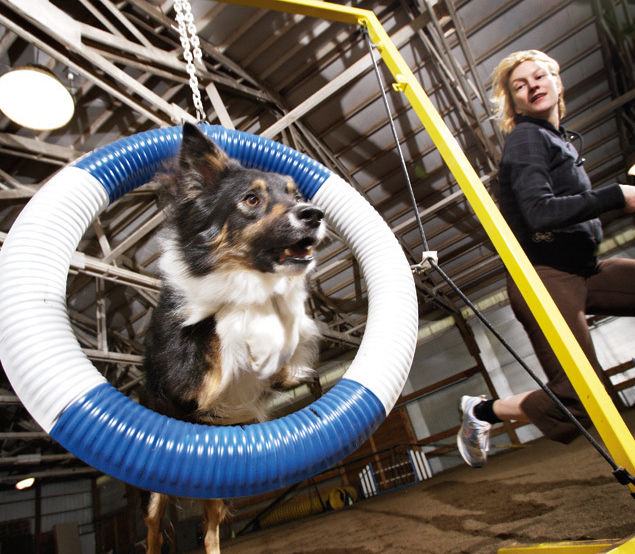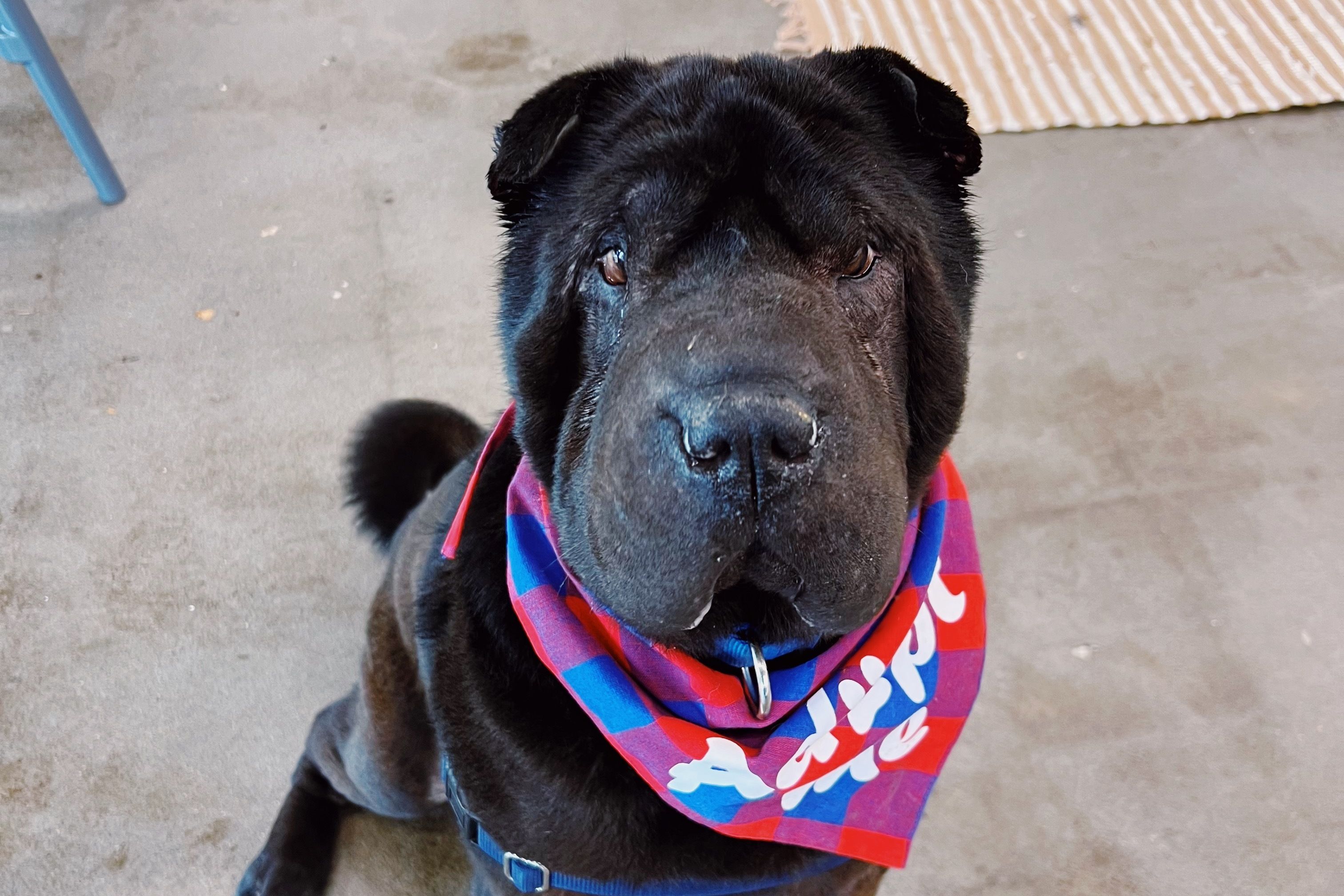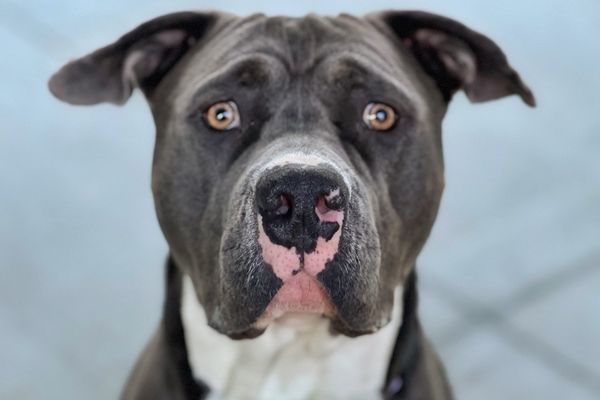Best in Show

EVEN BEFORE I brought my 3-year-old border collie, Jackpot, home from the Oregon Humane Society in March 2007, there were plenty of warning signs that my life was about to change. Like the one hanging outside of his cage, which read: Do you own sheep? This dog’s for you! Jackpot was impossibly cute (note the picture above), but also a disturbed little dog. He’d eaten large tufts of his own fur, giving him a mangy appearance, and four of his front teeth were broken at the tip. According to the staff behavioral consultant, Jackpot had spent most of his life tied up outside, where, driven mad with boredom, he’d taken to chewing on his chain and also himself.
“Border collies require a lot of stimulation,” the consultant informed me in the meet-and-greet room, cautioning that, without adequate amounts of exercise, working dogs like Jackpot also had been known to eat through walls, nip at children, and chase down fast-moving cars as if they were stray cattle. “This breed needs a job to do—like sheep herding. Or agility training.”
I didn’t know what agility training was, but by then it didn’t matter. You know how these things happen. A paw on your knee. A nuzzle. Doleful brown eyes. Your chest goes warm, a tear wells up. And before you know it, you’ve dropped $300 on supplies at Pet-Smart, and that border collie—the most demanding, strong-willed, and obsessive-compulsive of herding breeds—is pretty much running your life. Goodbye, sleeping in! So long, happy hour! Must make Jackpot happy. Run to park. Play fetch—for 45 minutes, morning and night—rain, sleet, and mud be damned.
My own boredom with the dog-walking routine finally led me to look up “agility training” on YouTube one cold winter night. And there I found it: my dog’s trophy-filled, blue-ribboned future. Mesmerized, I watched video after video of Jackpot look-alikes launching themselves over jumps, bursting through tunnels, and weaving through a series of poles. I looked down at Jackpot—scruffy, homely Jackpot with a dirty tennis ball stuffed in his mouth.
“Jackpot, you’re an agility dog!” I told him. Whereupon he immediately dropped the slobber-covered ball at my feet.
Dog agility is best described as a canine obstacle course run at high speed. Under total control of the handler, who hoofs it alongside his furry companion, the dog must work its way through a series of apparatuses that might include tire jumps, tunnels, teeter-totters, ramps, tables, or weave poles. In most agility events, dogs compete for the fastest time, but in order to claim victory they must also finish the course with the fewest number of “faults”—marks deducted from their score for, say, knocking down a pole during a jump.
The sport got its start at England’s famous Crufts Dog Show back in 1977—when the Lincolnshire German Shepherd Dog and All Breeds Training Society was charged with putting on an exhibition to entertain the crowds between rounds of purebred judging. But the first official dog agility competition in the United States likely didn’t occur until 1986, in Texas, where the United States Dog Agility Association (USDAA), one of three major agility sporting associations, now makes its home.
Today, the USDAA has registered some 30,000 dogs and is affiliated with 150 regional dog agility clubs that each put on two or three shows per year. Regular agility broadcasts by Animal Planet help fuel the sport’s popularity. “I keep expecting membership to level off, but t’s still increasing,” notes USDAA president Kenneth Tatsch.
Not surprisingly, dog agility is especially hot here in canine-crazed Portland. In fact, it can take months to work your way up top trainers’ waiting lists, and lessons can cost up to $50 per hour. Luckily, the Columbia Agility Team, an all-volunteer organization that also hosts USDAA-sanctioned agility events, teaches low-key foundation classes designed for dogs with no prior agility training, as well as beginner courses tailored for more seasoned canines. Both options can be had for a great price: $60 for seven, one-hour sessions at the group’s Wilsonville and Forest Grove barns.
Although I’d envisioned Jackpot as a champion agility dog even before we began our first class with the Columbia Agility Team (he’d already taken to triumphantly scrambling up play structures at the park of his own accord), agility lessons need not lead to actual competition.
“The point is simply to have fun with your dog,” our instructor, a 63-year-old volunteer named Laurie Beck, informed me and the half-dozen other wide-eyed dog owners gathered around her for our inaugural lesson. It’s also a great confidence-builder for skittish dogs (as it was for Joey the boxer); a good way to channel the enthusiasm of the hyperactive beast (as it was for Tonka the golden retriever); and a light cardio workout for the human handler.
Of course, we owners may have known what we wanted our dogs to do, but they had other ideas: Tonka preferred to go under the hoop instead of through it, and Kenzi, another border collie, was terrified of the wobbling teeter-totter.
Instructor Beck, however, had a surefire method of enticing the dogs over high jumps and through tunnels: string cheese placed upon a “target” (a plastic lid). Though even this technique backfired occasionally, as when Jackpot U-turned midtunnel and popped back out of the entrance, looking for the shortest route to the cheese. But when, instead of entering the tunnel, Joey (whose owner asked us not to use her boxer’s real name) raced around the dirt-floored barn and then tried to hump her owner’s leg, Beck unleashed her secret weapon: squeeze-cheese in a can, which is apparently irresistible.
Seven weeks and many squirts of cheese later, every dog could negotiate a series of obstacles off-leash, guided only by the voices and gestures of their owners. Yes, when Beck told us that she couldn’t believe we were a foundation class, we all had reason to be proud. But with all due respect to Kenzi, Joey, and Tonka, Jackpot was the fastest dog in class. And as every owner knows his dog to be, he is the very best.




